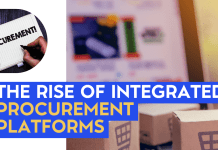Mary Bennell, director of SWPA, takes a look at how to tailor your procurement strategy to embed the goals, objectives, and outcomes for social value
As we are all aware social value is a wide-ranging topic which has become more prevalent in the public sector since the inception of the Social Value Act (2012). The squeeze on public sector budgets has exacerbated the need for social value to help generate the desired value for money outcomes.
How do you guarantee that social value is being included in your procurement practices and projects?
There is, of course, no one answer that will work for everyone!
But if we strip away policy, process, and outcomes we are left with an undeniable fact – social value is about people and communities. Every one of our communities will have different needs and wants, so before we can decide if the social value added to a project is meaningful, we first must know what that community needs.
There are many great examples of this happening in practice; the Hope Rise development saw the need for young people to have their own homes, but they needed to be close to amenities and support. The project, by putting the people first, has delivered their homes – with community builders to support the residents, without losing any public space! Before any other social value outcomes have been considered, the needs of the people and the community have been met – arguably social value in itself!
Other councils we are working with are taking this same approach to housing – by identifying if they require supported or move on accommodation, family homes, flats or bungalows, existing communities can be supported while new ones emerge.
While this is a great starting point for many developments, the pressure on councils to meet many agendas – the climate emergency, biodiversity net gain and fuel poverty to name a few, can feel conflicting. But social value can be the glue that elevates them all.
Bee bus stops, living walls or roofs, green spaces, energy efficient housing all have an element of social value while at the same time enabling councils and other social housing providers to meet the other pressures and agendas they face.
How can you put it into practice?
So, to put it in practice, it’s unfortunately back to the policy, processes, and procurement strategy. Develop your strategy to ensure the goals, objectives, and outcomes to achieve social are embedded in all your procurements.
There are several social value measurement toolkits, such as TOMs or HACT, which can be used in conjunction with your tenders to determine which suppliers can best meet your stated needs for each community and create a social value weighting that will allow you to work with suppliers most aligned to your goals.
This strategy should extend to other procurement routes, if you choose to use a framework or DPS provider, their procurement should be robust enough to have suppliers that are able to support your social value goals.
At SWPA, as part of LHC, have created the LHC Lifetime Values, this uses the four value capitals as identified in the value toolkit by the Construction Innovation Hub. These are used to inform our framework procurements. To enhance the social value in procurement for our members, we also have a community benefit fund – this enables small community groups to receive grants through our fund provider South West Community Matters. This increases the social value of the project while directly helping the communities we are working with – a win-win situation!














